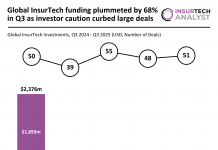In the dynamic realm of insurance, a silent revolution is underway, orchestrated not by charismatic CEOs or flamboyant disruptors but by the enigmatic force of machine learning (ML). These complex algorithms have become insurance industry oracles, predicting claims and determining premiums with uncanny accuracy.
However, these digital soothsayers often operate in secrecy. The concept of ML explainability has emerged as the key, shedding light on the inner workings of these algorithms.
One key area where ML explainability has made a large impact is that of algorithmic opacity. Imagine applying for car insurance and receiving a seemingly high quote without understanding why. Herein lies the challenge of it – the calculations determining your premium are buried deep within layers of data and code, a labyrinth few can navigate. ML explainability steps in to address this, peeling back the layers to reveal the “why” and “how” of algorithmic decisions.
ML explainability aims to uncover the intricacies of complex systems, allowing users to understand the rationale behind decisions. In insurance, this transparency is not just a matter of curiosity; it’s a cornerstone of trust and fairness, making the why more important than ever in regard to AI.
For insurers, explainable ML serves as a bridge between innovation and customer confidence.
When customers comprehend how data is used and why decisions are made, trust flourishes. For instance, if a health insurance application is denied, a clear explanation ensures the customer knows it’s based on understandable factors, such as business rules or regulatory constraints.
Explainability also reintroduces a human touch to an increasingly automated process, enabling insurance professionals to review and understand machine-generated recommendations. This human oversight ensures that ML complements, rather than replaces, human judgment, aligning with ethical and legal standards.
The Road to Explainability
While the journey towards ML explainability poses challenges, finding the delicate balance between simplicity and accuracy is crucial.
Initiatives like the EU’s General Data Protection Regulation (GDPR) underscore the necessity of transparency in industries like insurance where ML plays a pivotal role.
Various approaches, such as LIME, SHAP, Feature Importance, Partial Dependence Plots (PDP), Counterfactual Explanations, and Global Surrogate Models, aim to provide understandable explanations for machine-driven decisions in insurance.
Companies such as Earnix are also making explainability more accessible. It is available as a feature within their solution – in a capacity which goes far beyond the standard implementation of traditional approaches, fitting the algorithms to the needs of the insurance industry.
A more transparent future
As the insurance industry enters a new era, the future of ML will be defined not only by sophisticated algorithms but also by the clarity of explanations. Companies that demystify their digital oracles will lead the way, fostering an environment where trust and innovation coexist.
In essence, ML explainability is not just about making algorithms transparent; it’s about ensuring that the future of insurance prioritises the human experience alongside technological advancement.
After all, behind every policy, claim, and premium, there’s a person seeking not only economic surety but understanding.
And in a world where AI holds the keys to many doors, explainability is the light that guides us across the threshold.
Read the full blog from Earnix here.
Copyright © 2024 InsurTech Analyst










